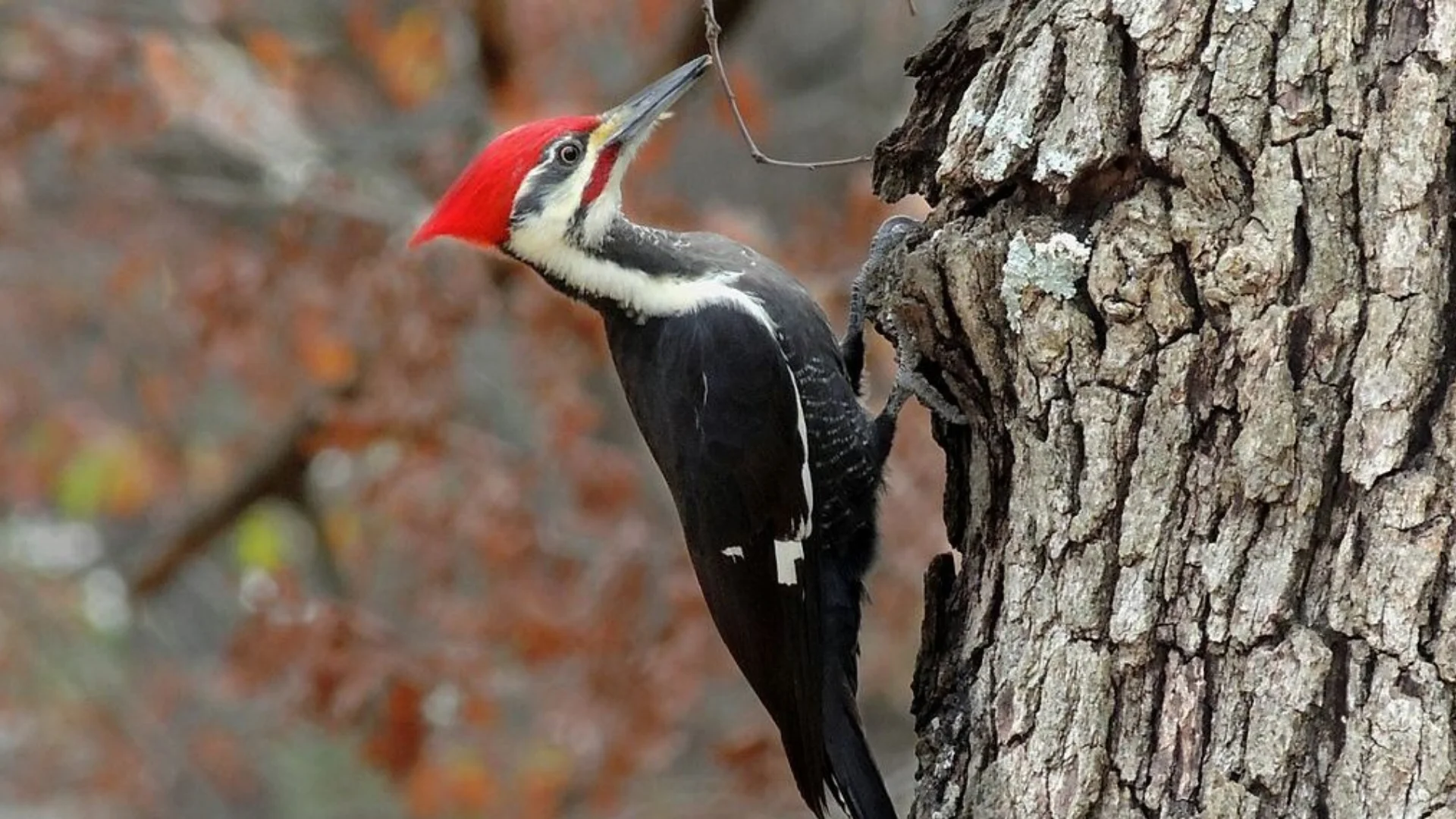Michigan’s diverse landscapes, ranging from lush forests to serene wetlands, provide an ideal habitat for various wildlife species, including woodpeckers. These fascinating birds are not only important for the ecosystem but also offer birdwatchers and nature enthusiasts a captivating subject to study. This comprehensive guide will delve into the woodpecker species found in Michigan, exploring their characteristics, habitats, and behaviors.
TRENDING
Create Your Own DIY Bong: Easy Steps For A Custom Piece
Introduction To Woodpeckers
Woodpeckers are part of the Picidae family and are easily recognizable by their distinctive pecking behavior, which they use to find food, establish territory, and create nesting sites. Their unique anatomy, including strong beaks and stiff tail feathers, enables them to drill into trees and other surfaces with precision. In Michigan, woodpecker species vary in size, color, and habitat preferences, each contributing to the ecological balance of the region.
Common Woodpecker Species in Michigan
Downy Woodpecker (Picoides pubescens)
Description: The Downy Woodpecker is the smallest woodpecker species in North America. It features a white undersurface with a black-and-white striped back and a small, stubby bill. Males have a small red patch on the back of their heads.
Habitat: This woodpecker prefers deciduous forests and woodlands but can also be found in urban areas with suitable trees. In Michigan, Downy Woodpeckers are common in both rural and suburban settings.
Behavior: Downy Woodpeckers are known for their high-pitched calls and rapid drumming. They primarily feed on insects and larvae found in tree bark, often probing with their small bill.
Hairy Woodpecker (Picoides villosus)
Description: The Hairy Woodpecker closely resembles the Downy Woodpecker but is larger with a longer bill. The male Hairy Woodpecker has a more prominent red patch on the nape.
Habitat: Hairy Woodpeckers inhabit mature forests and woodlands across Michigan. They are often seen in mixed forests where they can find dead or decaying trees, which are rich in insect larvae.
Behavior: This species is known for its loud, rhythmic drumming, which can be heard from a distance. Hairy Woodpeckers primarily feed on beetles and other insects found in the wood of trees.
Red-bellied Woodpecker (Melanerpes carolinus)
Description: Despite its name, the Red-bellied Woodpecker’s most distinctive feature is its bright red cap and nape. The belly is only faintly tinged with red, making the name somewhat misleading.
Habitat: This species prefers mixed hardwood forests and mature woodlands but can also be seen in parks and residential areas with large trees. They are more common in southern Michigan.
Behavior: Red-bellied Woodpeckers have a distinctive call and are known for their drumming that sounds like a rapid, mechanical noise. They have a varied diet that includes insects, fruits, nuts, and seeds.
Northern Flicker (Colaptes auratus)
Description: The Northern Flicker is easily recognizable by its unique coloring—brownish with black bars on the back and a spotted belly. It has a distinctive black crescent-shaped collar and a red or yellow patch on the rump.
Habitat: Northern Flickers are found in open woodlands, parks, and even suburban areas. They are adaptable and can live in various habitats as long as there are suitable feeding grounds.
Behavior: This woodpecker has a distinctive “wick-a-wick-a-wick” call and is known for its ground-feeding behavior, where it searches for ants and beetles. It also drills into trees to find insects and create nesting sites.
Pileated Woodpecker (Dryocopus pileatus)
Description: The Pileated Woodpecker is one of the largest woodpeckers in North America. It features striking black plumage with a bright red crest on its head and a white stripe down the neck.
Habitat: Pileated Woodpeckers prefer mature forests with large, old trees. In Michigan, they are commonly found in mixed hardwood forests and large tracts of undisturbed woodland.
Behavior: Known for their loud, echoing drumming, Pileated Woodpeckers primarily feed on carpenter ants and beetles found in decaying wood. Their large size and powerful beak make them capable of creating large, rectangular holes in trees.
Woodpecker Behavior and Ecology
Woodpeckers play a crucial role in forest ecosystems. Their feeding habits help control insect populations and their nesting activities create habitats for other species. For example, the cavities they excavate can be used by other birds, mammals, and insects.
Feeding: Woodpeckers are insectivores and use their specialized bills to pry open bark and wood in search of food. They also consume fruits, nuts, and seeds depending on the season and availability.
Nesting: Most woodpeckers create their own nesting cavities by drilling into trees. These cavities are used for breeding and raising young. The size and shape of the cavity can vary among species.
Communication: Woodpeckers are known for their distinctive drumming and calls. The drumming serves as a way to communicate with other woodpeckers, establish territory, and attract mates.
Tips for Observing Woodpeckers in Michigan
- Visit Forested Areas: Woodpeckers are most commonly found in forested areas with mature trees. National and state forests, as well as large parks, are ideal locations.
- Look for Drumming: The sound of woodpecker drumming can help locate these birds. Their drumming is often loud and rhythmic, making it easier to pinpoint their location.
- Use Binoculars: Woodpeckers can be elusive, so binoculars can help you get a closer view without disturbing them.
- Check for Cavity Trees: Look for trees with cavities, as these are often signs of woodpecker activity. Observing the trees can give you clues about which species are present.
- Be Patient: Woodpeckers can be shy and may take time to appear. Patience and quiet observation are key to successful birdwatching.
Conservation and Protection
Woodpecker populations are generally stable, but habitat loss and changes in forest management practices can impact their numbers. Conservation efforts include preserving large tracts of forest and promoting sustainable land use practices. Birdwatchers and nature enthusiasts can contribute by supporting conservation organizations and participating in citizen science projects.
Conclusion
Michigan’s woodpecker species offer a fascinating glimpse into the diversity of avian life in the state. From the small Downy Woodpecker to the impressive Pileated Woodpecker, each species plays a unique role in the ecosystem. By understanding their habits, habitats, and behaviors, we can better appreciate and protect these remarkable birds. Whether you’re a seasoned birder or a curious nature lover, exploring Michigan’s woodpecker species can be a rewarding and educational experience.
ALSO READ: Discover Molly Eslao: Innovative Ideas And Insights For 2024
FAQs
What is “woodpeckers in Michigan”?
“Woodpeckers in Michigan” refers to the various species of woodpeckers that inhabit the state of Michigan. This article provides an overview of these woodpecker species, detailing their characteristics, habitats, and behaviors. It serves as a comprehensive guide for birdwatchers and nature enthusiasts interested in learning about these fascinating birds and their role in Michigan’s diverse ecosystems.
How can I identify the Downy Woodpecker from other woodpecker species in Michigan?
The Downy Woodpecker is the smallest woodpecker in North America, featuring a white undersurface and a black-and-white striped back. Its bill is short and stubby, and males have a small red patch on the back of their heads. It is often found in deciduous forests and urban areas with suitable trees.
What makes the Pileated Woodpecker unique compared to other woodpeckers?
The Pileated Woodpecker is notable for its large size and striking appearance, including black plumage with a bright red crest. Its powerful beak allows it to create large, rectangular holes in trees. This species prefers mature forests with large, old trees and is known for its loud, echoing drumming.
Why are woodpecker drumming sounds important for their behavior?
Woodpecker drumming serves multiple purposes: it helps them establish territory, communicate with other woodpeckers, and attract mates. The rhythmic drumming is a key part of their vocal communication and can also be a sign of their presence in an area.
What are some effective ways to observe woodpeckers in Michigan?
To observe woodpeckers, visit forested areas with mature trees, as these are prime habitats. Listen for their distinctive drumming sounds, which can help locate them. Using binoculars can provide a closer view, and looking for trees with cavities can indicate woodpecker activity. Patience and quiet observation are essential for successful birdwatching.











